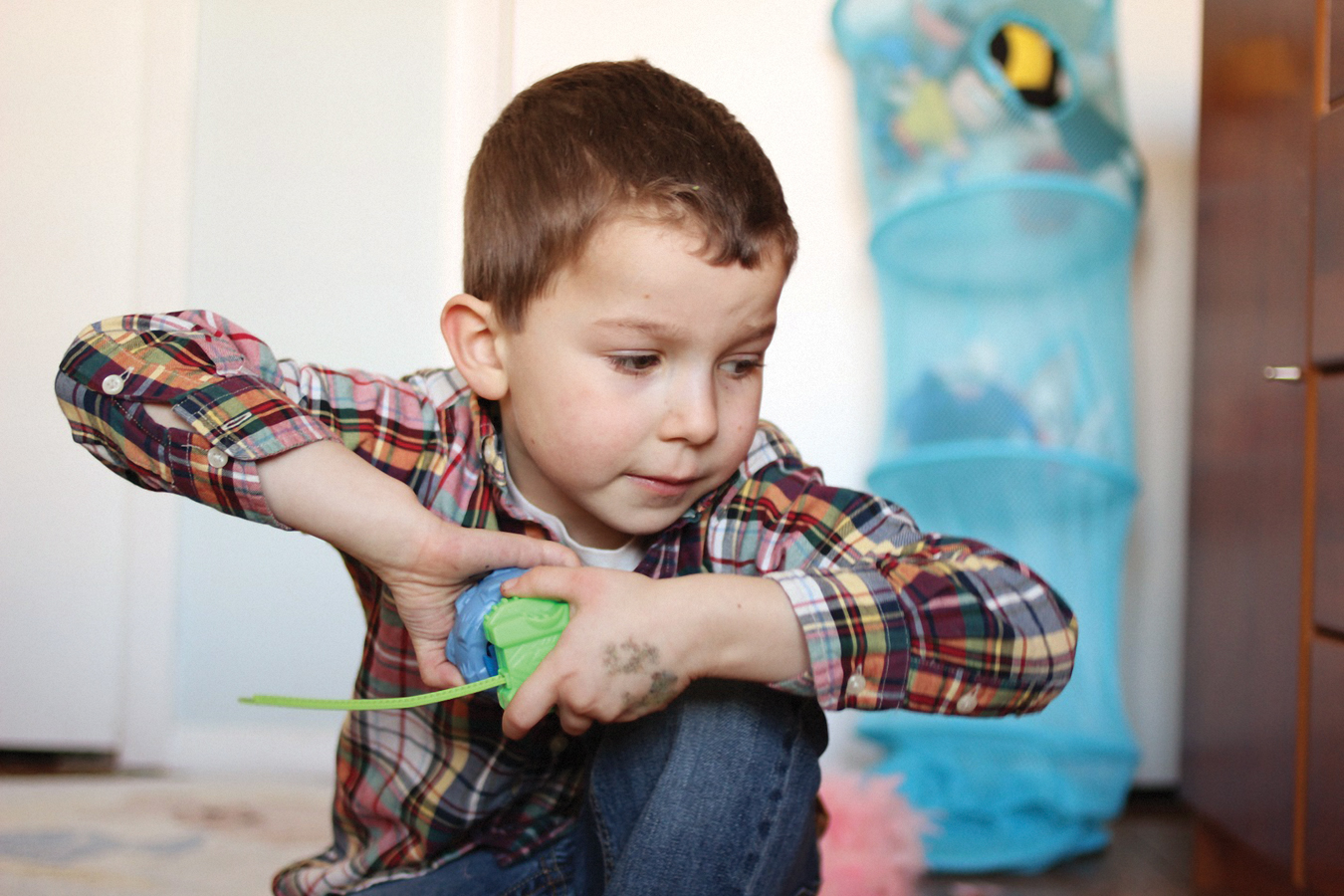Applications
The best way to understand thinking in early childhood is to listen to a child, as applications 1 and 2 require. If some students have no access to children, they should do application 3 or 4.
Question 9.1
Replicate one of Piaget’s conservation experiments. The easiest one is conservation of liquids (Figure 9.1). Work with a child under age 5 who tells you that two identically shaped glasses contain the same amount of liquid. Then carefully pour one glass of liquid into a narrower, taller glass. Ask the child if one glass now contains more or if the glasses contain the same amount.
Question 9.2
To demonstrate how rapidly language is learned, show a preschool child several objects and label one with a nonsense word the child has never heard. (Toma is often used; so is wug.) Or choose a word the child does not know, such as wrench, spatula, or the name of a coin from another nation. Test the child’s fast-
mapping. Question 9.3
Theory of mind emerges at about age 4, but many adults still have trouble understanding other people’s thoughts and motives. Ask several people why someone in the news did whatever he or she did (e.g., a scandal, a crime, a heroic act). Then ask your informants how sure they are of their explanation. Compare and analyze the reasons as well as the degrees of certainty. (One person may be sure of an explanation that someone else thinks is impossible.)
Question 9.4
Think about an experience in which you learned something that was initially difficult. To what extent do Vygotsky’s concepts (guided participation, zone of proximal development) explain the experience? Write a detailed, step-
by- step account of your learning process as Vygotsky would have described it.
ONLINE CONNECTIONS

To accompany your textbook, you have access to a number of online resources, including Learning Curve, an adaptive quizzing program, critical thinking questions, and case studies. For access to any of these links, go to www.worthpublishers.com/
- Theory of Mind. Watch a variety of children challenged by false-
belief tasks. - Language Development in Early Childhood. Six-
year- olds can tell jokes and 3- year- olds engage in private speech. A variety of video clips showcases the development of children’s speech through early childhood.